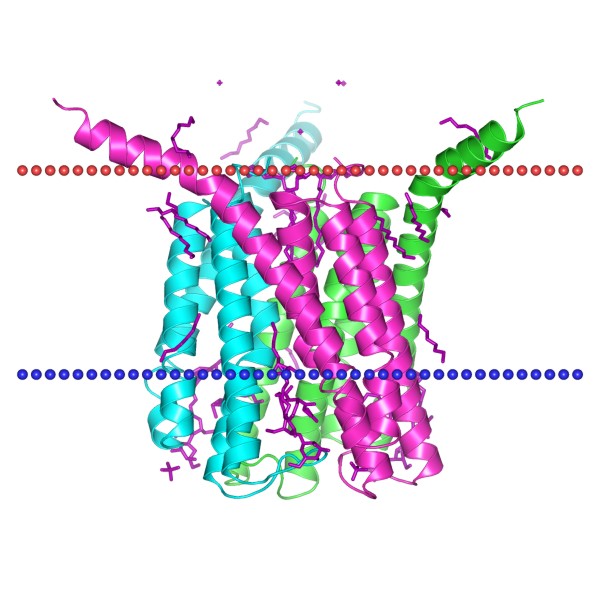Mempro™ Membrane-Associated Proteins in Eicosanoid and Glutathione Metabolism (MAPEG) Production Using Virus-Like Particles
Creative Biostructure now provides custom Mempro™ production service of membrane-associated proteins in eicosanoid and glutathione metabolism using advanced virus-like particles technique.
A membrane-associated protein in eicosanoid and glutathione metabolism (MAPEG) superfamily is a membrane protein superfamily defined according to sequence motifs, structural properties and enzymatic activities. MAPEG superfamily contains six human proteins and several non-mammalian members that are identified from green plants, fungi and bacteria. The functions of MAPEG members are highly divergent. Based on the multiple sequence alignments, members of MAPEG can be sub-categorized into 4 subfamilies. The first subfamily contains 5-lipoxygenase-activating protein (FLAP), microsomal glutathione S-transferase 2 (MGST2), and leukotriene C4 (LTC4) synthase. The second subfamily consists of MGST3 and members found in fungi and plants. The third subfamily contains members of MAPEG that are identified in bacteria, and the fourth subfamily contains MGST1 and MGST1-L1.

Figure 1. The schematic structure of human leukotriene C4 (LTC4) synthase. (OPM Database)
Virus-like particles (VLPs) have been applied for multiple biological researches for a quite long time, including vaccine developments, antigen deliveries, heterologous epitope presentation, and membrane protein production. VLPs are self-assembled structure formed by viral structural proteins. VLPs behave the same as native virus in many ways, but VLPs are non-infectious as all of the VLPs are devoid of any viral genetic materials. Many molecule tools have been developed to obtain VLPs from virus families such as Parvoviridae, Flaviviridae, Retroviridae, etc. VLPs can be obtained from host systems including bacteria (E.coli), yeast, insect cells, mammalian cells and plant cells.
Creative Biostructure now can provide high yield, high quality and high purity Mempro™ MAPEG protein production service with most advanced VLPs technique. Co-expressing the viral structural core protein and target MAPEG protein within the host system will be performed to obtain the specific lipoparticles (VLPs that contain high concentration of specific membrane proteins in their native conformation). The expressed viral structural core protein will self-assemble in the plasmid membrane, and perform the budding-off from the plasmid to form the lipoparticles. Target MAPEG protein will be captured within the lipoparticles, and be obtained from the surface of host cells. The entire process is free from detergents and mechanical disruption. Thus the orientation of target membrane proteins and structure will be protected perfectly.
Creative Biostructure also provides a widely range of other Mempro™ membrane protein production services. Welcome to contact us for more details.
References:
A.Roldão, et al. Virus-like particles in vaccine development.Expert Rev. Vaccines, 2010,9(10): 1149-1176.
Feussner I, Wasternack C. The lipoxygenase pathway [J]. Annual review of plant biology, 2002, 53(1): 275-297.
Jakobsson, Per-Johan, et al. Membrane-associated Proteins in Eicosanoid and Glutathione Metabolism (MAPEG), A Widespread Protein Superfamily. American Journal of Respiratory and Critical Care Medicine 161.supplement_1 (2000): S20-S24.